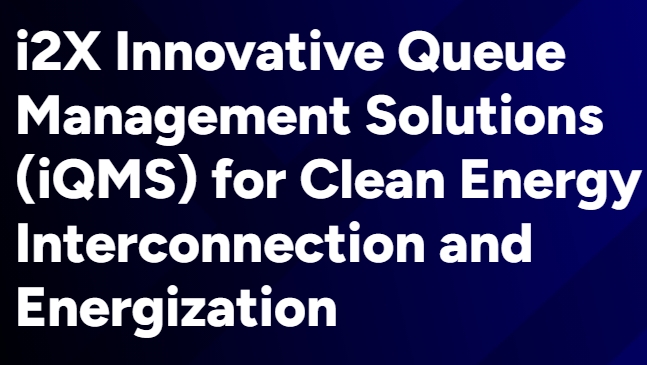DER interconnection is a complex process with many players, but software providers are uniquely positioned to transform it with automation and innovation. As outlined in the recent DOE Distributed Energy Resource Interconnection Roadmap, the utility industry is driving towards ambitious goals such as rapid interconnection approvals, reliable reporting and project tracking for stakeholders. An application intake and workflow tool should enable best-of-breed design and create processes that do not lead to new administrative burdens that can slow down timelines and lead to inaccuracies.
These queue management platforms play a crucial role in orchestrating enhanced DER interconnection processes by providing the following:
- Automating DER interconnection workflows
- Enabling easily adaptable, flexible processes
- Supporting end-to-end integrations
- Promoting an inclusive, accessible interconnection environment
This is exactly what Clean Power Research® plans to accomplish with Puget Sound Energy on their newest project awarded by the DOE, the i2x Innovative Queue Management Solutions (iQMS) for Clean Energy Interconnection and Energization program.


Automating DER interconnection workflow
Within a single DER application, utilities must coordinate input from both internal stakeholders (e.g., administrators and engineers) and external partners (e.g., developers and asset owners). To streamline the process, utilities benefit from centralizing workflow management on a single platform. The software should automate repetitive tasks, handle multiple DER technologies, allow for upfront validation, and dynamically route projects based on criteria such as size, technology and location. This leads to consistent, efficient and transparent operations, and reduces rework.
From the developer’s perspective, a single portal to access all relevant information—from the pre-application stage to permission issuance—enhances efficiency. Such a portal supports siting analyses, application submission and review, and identifies the next steps in the process.
For utilities, a centralized platform simplifies coordination of stakeholder inputs, performance tracking of interconnection programs and identification of areas for improvement. It also makes regulatory audits and data-sharing with researchers more manageable by providing a single access point to key data.
Easily adaptable, flexible processes
An effective software solution allows high configurability to adapt to evolving regulatory requirements. Ideally, software should allow changes in workflow design, data integrations and user access with minimal IT support.
Given this, it’s crucial for utility staff to develop and maintain relevant skillsets necessary to implement, manage and improve their interconnection processes instead of relying on “black box” IT solutions. Training and certification programs should be offered by the software developer to empower utility staff with proper education and training to best take advantage of pertinent functionality.
End-to-end integrations with all involved systems
DER interconnection workflows are uniquely complex, requiring accuracy, precision, flexibility and efficiency. An ideal software platform can automate key processes end-to-end and bring together the necessary components required for approvals. This includes connecting with leading solutions that enhance both technical grid analysis (such as hosting capacity screens, power flow modeling and automated studies) and customer-facing tasks (such as ePayments and eSignatures). Without a highly programmable system that easily integrates, utilities face manual data entry and management burdens across multiple systems.
Fostering equity in the interconnection space
A key aspect of DER interconnection reform is empowering interconnection customers to make informed decisions about their assets and participate actively in the process. This calls for a new model of interconnection process design that provides customers with ownership education, gains clear consent and eliminates bad actors. The orchestration platform should enable features such as personalized return-on-investment (ROI) calculators, agent authorization forms and secure user access controls. The platform must be easily accessible, use inclusive language and allow for further support.
Moreover, location data can be collected to inform Equity and Environmental Justice (EEJ) policies. By automating identifiers—such as using the Climate and Economic Justice Screening Tool (CJEST)—utilities can report more accurately and support EEJ-focused initiatives such as the EPA’s Solar for All program, and other state and local incentive programs. With this data, software providers can help overcome interconnection barriers for all communities.
Take action
Want to learn more? Contact us to discuss how PowerClerk is helping utilities streamline processes and meet these types of goals. Clean Power Research has extensive knowledge on this topic, hosting more than 60 interconnection programs at the distribution and transmission level.
